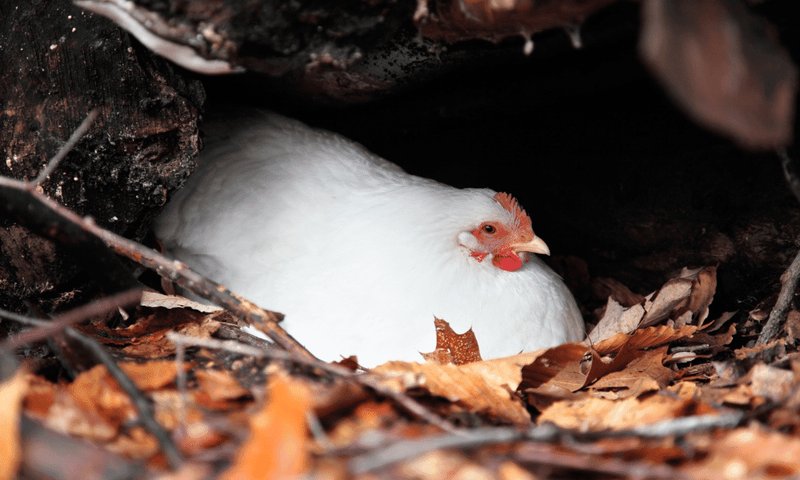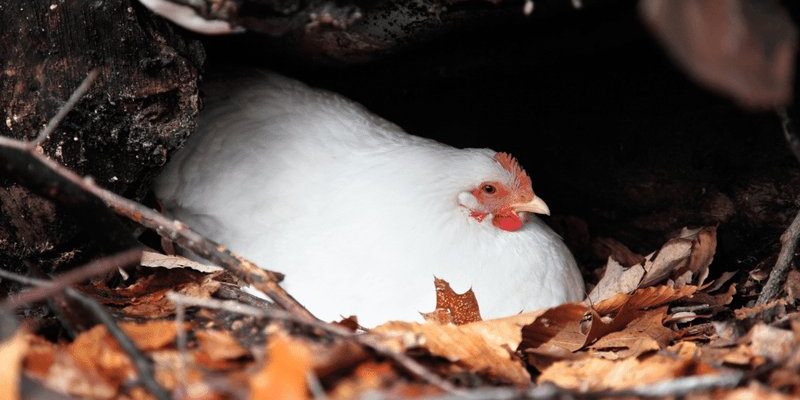
Think of chickens as nature’s little architects. They build their nests with a purpose, and each step in their lifecycle is tied to making those beautiful eggs we all love. It’s as if they have a secret recipe for life that includes instinct, environment, and a sprinkle of social habits. So grab your favorite beverage, and let’s get into the nitty-gritty of chicken nesting habits and their lifecycle.
Understanding Chicken Nesting Habits
Chickens have some pretty unique nesting habits that revolve around their instincts and social behaviors. The first thing to realize is that not all chickens will nest the same way. Individual breeds may have variations in their preferences for nesting locations, but they all share a common goal: to feel safe and secure while laying eggs.
Typically, hens prefer to nest in quiet, dark places. This instinct harks back to their wild ancestors, who would find hidden spots to lay their eggs, keeping them safe from predators. Imagine a cozy, dimly-lit nook where a hen can settle in, arrange her bedding, and feel protected. Whether it’s a nesting box you’ve set up in your coop or a secluded corner of your yard, hens will instinctively seek out a comfortable and safe spot.
You might wonder what factors influence a hen’s choice of nesting area. Well, it’s a combination of instinct, environmental conditions, and even social dynamics within the flock. For instance, if another hen has claimed a nesting box, it might discourage others from using it. Hence, having multiple nesting boxes is often recommended to keep your hens happy and reduce competition.
The Lifecycle of a Chicken
Now that we’ve got a handle on their nesting habits, let’s break down the lifecycle of a chicken. Chickens go through several stages, starting from the egg to adulthood. The whole process is like a timeline of growth, each stage critical in shaping them into productive layers.
1. Egg Stage: It all begins with an egg. A hen lays her eggs in a nest, usually after mating with a rooster. The eggs are delicate and need the right conditions—temperature, humidity, and protection—to develop into chicks.
2. Incubation: If the eggs are fertilized, the hen will sit on them to incubate. This usually takes about 21 days. During this time, the hen turns the eggs periodically, ensuring even heat and moisture. It’s like she’s putting in a lot of heart and effort into nurturing her future chicks.
3. Chick Stage: After the incubation period, the tiny chicks break through their shells, ready to see the world. They’re incredibly vulnerable at this stage, relying on their mother for warmth and protection. Hens are attentive mothers, often clucking to call their chicks, guiding them to food and safety.
4. Juvenile Stage: As the chicks grow, they move into the juvenile stage. This is when they start to develop feathers and become more independent. They’ll begin scratching in the dirt for food, mimicking their mother’s foraging behavior.
5. Adult Stage: Finally, your chicks become adult hens or roosters. After about five to six months, hens start laying eggs, continuing the cycle. This is when their nesting habits come into play, as they seek safe spots to lay.
Factors Influencing Nesting Behavior
You might be curious about what influences a hen’s nesting behaviors. Here are a few key factors:
– Age: Younger hens may not be as experienced in nesting. They might take a little time to figure out what they like, while older hens usually know exactly where they want to lay their eggs.
– Breed: Different breeds have varying nesting habits. For instance, *Leghorns* are known for being prolific layers and often don’t fuss much about nesting. In contrast, *Silkies* tend to be more broody, making them more inclined to sit on their eggs longer.
– Environment: The environment plays a huge role as well. If hens feel stressed or unsafe, they may not lay eggs at all. Providing a calm and comfortable space in your coop can really help your hens feel secure.
– Lighting: Believe it or not, light plays an essential role in a hen’s laying cycle. Chickens have a natural circadian rhythm, and if they don’t get enough light during the day, it can affect their egg production.
Common Nesting Problems and Solutions
With all this talk about nesting, it’s only fair to discuss some common problems you might encounter along the way. Here are a few issues and how to tackle them:
– Nesting Conflicts: If multiple hens are vying for the same nesting box, it can lead to frustration and sometimes even aggression. The solution? Provide more nesting boxes than you have hens—ideally, one box for every three hens. This way, everyone has their own cozy spot.
– Egg Eating: Sometimes, hens might start eating their own eggs, which can be a real problem. This behavior can be due to boredom or a lack of calcium. To solve it, ensure your hens have enough enrichment, like pecking toys or greens, and provide crushed oyster shells for extra calcium.
– Broodiness: Some hens may become overly broody, refusing to leave the nest even when there are no eggs to incubate. This can be solved by gently removing her from the nest multiple times a day, encouraging her to break the cycle.
– Dirty Nesting Areas: Keeping nesting boxes clean is vital for the health of your hens and the quality of the eggs. Regularly check and clean the boxes, changing bedding when necessary to prevent pests and maintain hygiene.
The Importance of Proper Nesting Boxes
Having the right nesting boxes is key to a happy, productive flock. Chickens like privacy, so provide boxes that are enclosed or at least have a roof. Here are a few essential characteristics of good nesting boxes:
– Size Matters: Each box should be about 12 inches wide by 12 inches high and deep. This size lets the hen fit comfortably without feeling cramped.
– Bedding: Fill the boxes with straw, hay, or wood shavings. These materials provide comfort and insulation. Plus, they help absorb moisture.
– Location: Place the boxes in a quiet area of the coop, away from feeding and watering stations. A little peace and quiet go a long way in encouraging hens to lay eggs.
– Accessibility: Make sure boxes are easy for hens to access but not too easy for predators. High enough off the ground but not so high that the hens can’t hop in is ideal.
Caring for Hens During Nesting Season
Caring for your hens during their nesting season is a great way to ensure their health and productivity. During this period, it’s essential to monitor their needs closely. Here’s what you can do:
– Nutrition: Provide a balanced diet that includes layers feed, which is specially formulated for hens. This feed provides the necessary nutrients for egg production.
– Water: Fresh, clean water is vital. Make sure they have access to it at all times, especially during the warmer months.
– Comfort: Keep their living area clean and free from pests. Ensure proper ventilation to keep the air fresh.
– Health Checks: Regularly check your hens for signs of illness or stress. If a hen seems out of sorts or stops laying, it might be time to investigate further.
Chickens have an incredible lifecycle and unique nesting habits that are worth appreciating. Their journey from egg to adult is not just about laying eggs; it’s also about instincts, environment, and social behaviors. By understanding these aspects, you’ll be better prepared to nurture your hens and help them thrive, making your flock a successful part of your life.
So, the next time you see a hen fluffing her feathers in the nesting box, remember that you’re witnessing a natural rhythm—a delightful cycle that has repeated itself for thousands of years. Happy chicken-keeping!

